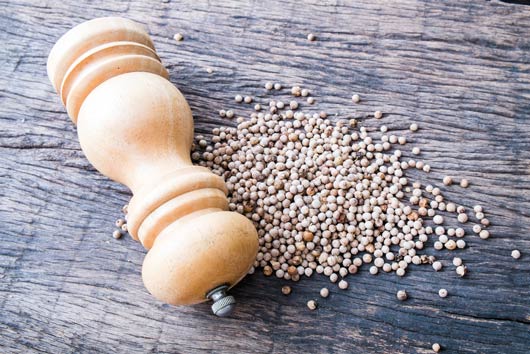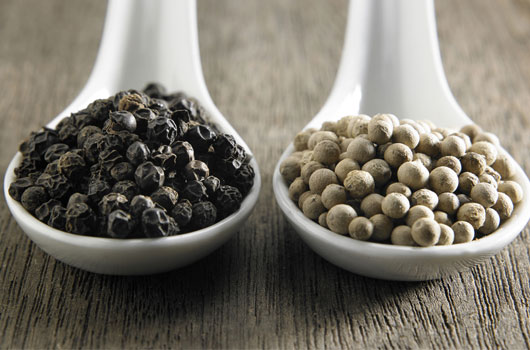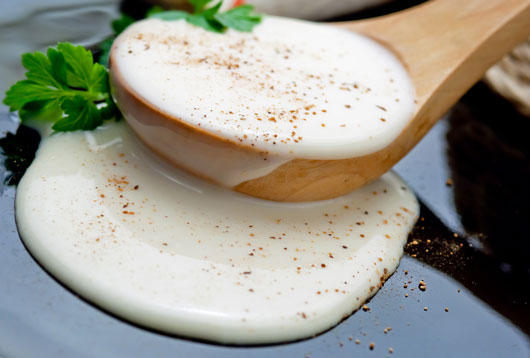
Salt and pepper are two of the most widely used, most commonly found and most recognized spices in the world. Every restaurant, every super market, even fast food joints and airport concession stands are armed with salt and black pepper. But what about black pepper’s often neglected (but equally delicious) cousin, white peppercorns? How come we never see that seasoning on the dining table or at your favorite cafe? Before you jump to conclusions, you should know that black pepper and white pepper are not the same thing in different colors. In fact, in some ways they are as different as black and white. See what we did there?
Black and white pepper each has unique qualities and flavors that make them equally tasty in different ways. So how are they different? Well to truly understand the difference you need to know how these two types of pepper are made. According to Cook’s Illustrated, “to make black pepper, unripe berries from pepper plants are gathered and dried until the skins are blackened, which gives it its characteristic aroma and sharp bite.” On the other hand, “white peppercorns are fully ripened berries that have been soaked in water to ferment, and their outer skin is removed before drying.” That explains why the colors of these two peppers (which actually originate from the same berries) are completely opposite.
Read Related: The New “It” Spice: 7 Awesome Turmeric Health Benefits

So now we know why they look different, so your next question is probably “do they taste different?” Yes, yes they do. Because of how the peppers are dried and the fact that white peppercorns have had the skin removed, they possess different levels of spice and different types of heat. White peppercorns pack a milder heat than black pepper, and they are less pungent and earthier in flavor than black peppercorns. White pepper has a subtler, gentle flavor that is complex but not too spicy. Typically white pepper is used more in Indian, Asian and Mexican cuisines, which makes sense since those foods are often noted for their earthy spices and flavors.

As for when you should use white pepper over black pepper, it’s really up for debate. Like so many spices, herbs, ingredients and flavors, the person who really needs to like what you are cooking is the person who will be eating it (aka, you!) so use what you like, what tastes good to you and what makes you happy. That said, the pros tend to gravitate towards white pepper when they are preparing dishes that are light in color. After all, aesthetics are important with your culinary masterpieces and nothing is worse than spending time slaving away to create a perfectly smooth white sauce (think béchamel) only to have black specks floating around looking like dirt. If you want to ensure the presentation of your dish is immaculate, appetizing and beautiful, and that your dish also has appropriate seasoning and flavor, go for the white pepper. But know that this pepper has a more rustic flavor, so the dish will taste a little different.
In addition, there are health benefits to using white pepper. White pepper can aid in digestions and can improve bone health. It is also a good source of manganese, dietary fiber and iron, all of which are essential minerals.
Bottom line: white pepper is not the same as black pepper, and while everyone has preferences when it comes to flavors and spices, it’s worth giving this spice a try in your daily dishes.









